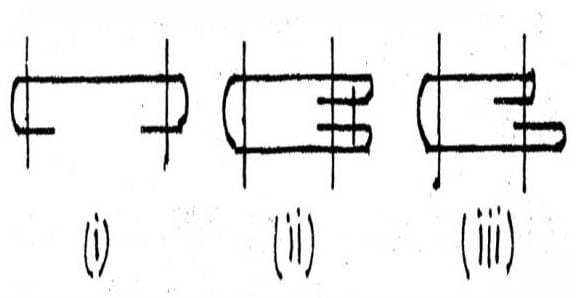Classes of seams:
Seam is a method of joining two or more layer of fabrics. Generally using thread to form stitches. I have also published another article on definition and properties of seam. You should read that article before read this article. There are hundreds types and classes of seams and these have been classified in six main classes. But presently, including two more types, seams have been classified in eight classes. Each type of seam has been discussed with diagram below. The arrangement of fabric ends along the sewing line is called the seam type.
Seam class-1: Superimposed seam
It is the most common classes of seams used in garments sewing. This type can be easily made and placing one end of a fabric on the other end properly and then sewing, these seams are made. Normally the sewn edge or the edges remain in same direction. For making this type of seam, various types of stitches are used. This type of seam is used for joining fabrics or edge neatening of fabrics by sewing the ends of fabric or for both the jobs. The uses of these are very frequent especially, in side of shirts or pants.
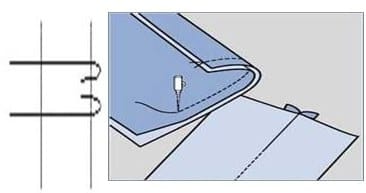
In figure-1, a number of superimposed seams have been shown, some of these seams are made by sewing once and some are by twice. For example, French seam, Piped seam etc. if the folding device is used for folding the ends of fabrics, the seams can be made easily and fairly.
Seam class-2 (Lapped seam)
The seams under this type are made by at least two fabrics. The two ends of the sewn fabrics along the seam line, normally stay in reversed ways and one’s end overlaps the other. The most easy of this class, this means the lap seam is shown in figure-2 (a). This seam is used less for making garments because, the threads coming out from the free end create problem. In figure-2(b); lap felled seam has been shown which is made by twine needle sewing machine. The strength of this seam is very strong but the sewing thread may be damaged due to rubbing. This type of seams are frequently used in making jeans pants.
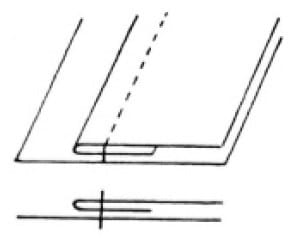
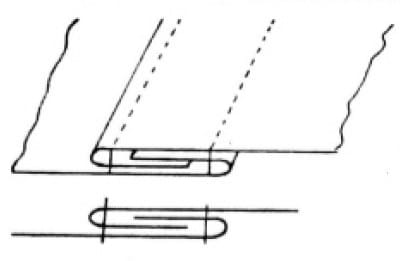
Seam class-3 (Bound seam)
At least two fabrics are required for making this type of seam. The end of one fabric is bounded by the end of the other because of which it is called the bound seam. The fabric which is used in bounding is normally of different color. A number of various types of bound seam have been shown in figure-. The most easy seam figure-3 (a) of this type generally is not used in garments making, because threads come out from the fabric with which bounding is made. Figure-3 (b), bound seam is widely used in garments making and it is applicable both for functional and decorative works. The use of folder in sewing machine is required for making of bound seam. More bound seams are there for sewing of which twin needle sewing machines are required and the under thread is continuously connected with the two needle thread from the under side of the seam. Generally the bound seam is used in undergarment, underwear, pant, female dresses, sleeping suits etc.
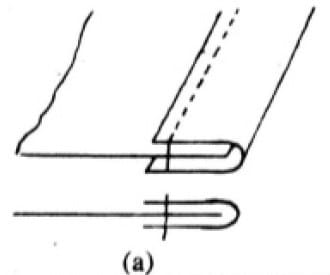
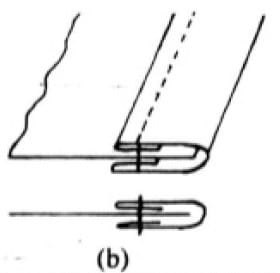
Seam class-4 (Flat seam)
This type of seam is made by joining the ends of two fabrics but the two ends stay side by side this means the one end does not overlap the other. Sometimes for decorative purpose, seams are made by keeping gap between the two ends, in figure-4, the example of flat seam has been shown. Generally, flat seam is made by twin needle machine, where with the help of another covering thread, continuous connection is made between the threads of the two needles. There is system of automatic cleaning of the two ends of the fabric by cutting just before the making of the seam. The thickness of this type of seam is comparatively less and for making garments with knitted fabrics and in undergarments, they are widely used.

Seam class-5 (Decorative seam)
Formerly this type of seams would called decorative stitching. This type of seam is made and used mainly for increasing decoration and beauty of garments and for this reason they are called decorative seam. This type of seam is made by making one or more than one line of side by side lines of stitches within one layer or more than one layers of fabrics. In figure-5, a number of types of decorative seams have been shown. For making this seam, multi-needle sewing machine and folder with it are required.

Seam class-6 (Edge neatening)
This type of seam is made mainly at the end of the fabric in such a way so that threads of the fabric cannot come out from the end of the fabric. In this article a number of seams have been shown of which (Figure-6) can be made most easily and it is made by overlock machine. This is mostly used. The other seams under this type are made at a time or in multiple times with a single thread or multiple thread sewing machines. The seams can be made easily by using folders with the machines. For making this type of seams, various types of stitches are used, which have been mentioned in the images.
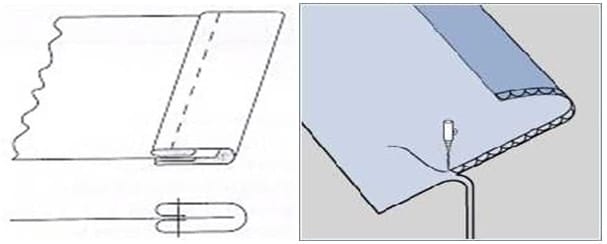
Seam class-7 (Applied seam)
This type of seams are largely similar to Lapped seams of class-2, but the component which is joined at the end of the fabric is extended from the sewing line limited on both sides. This type of seams are mainly used for joining of additional item at the ends of the fabrics. For example, joining of lace (figure-i), joining of elastic braid (figure-ii), joining of elastics (figure-iii) etc. Multiple thread sewing machines and folders are much helpful for making this type of seams.
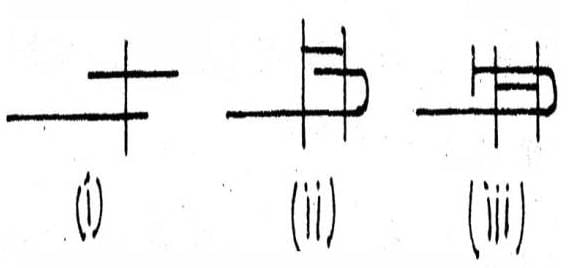
Seam class-8 (Enclosed seam)
This type of seams are also made mainly by one fabric but the edges of the fabric are sewn by folding variously. Making of belts and belt loops are performed by this type of seams. The use of folders are very much helpful for making seams. Seams can be made at a time with the help of twin needle sewing machines and folders. In figure-8, a number of seams of this category have been shown.
